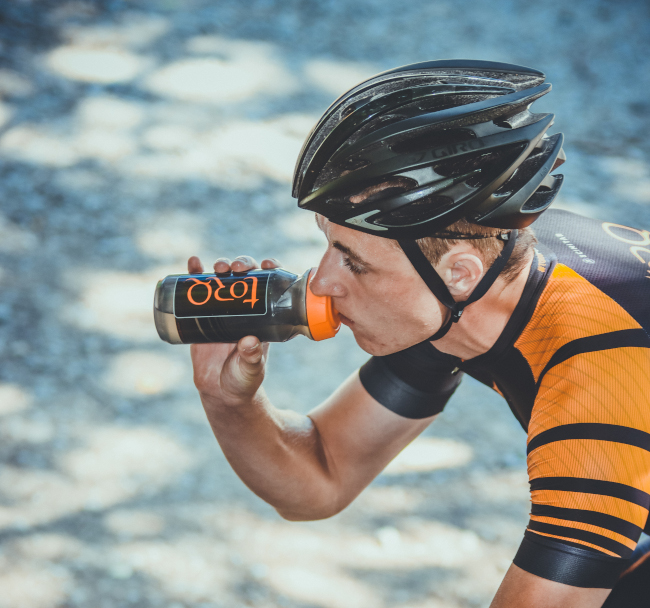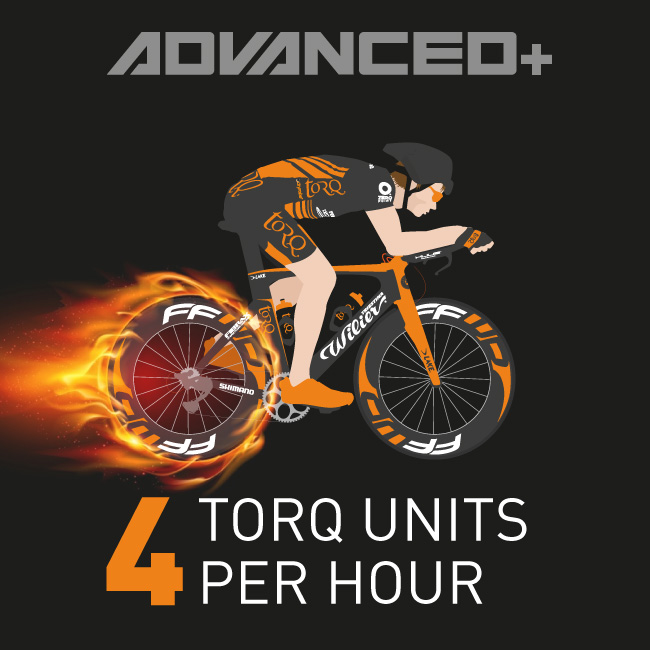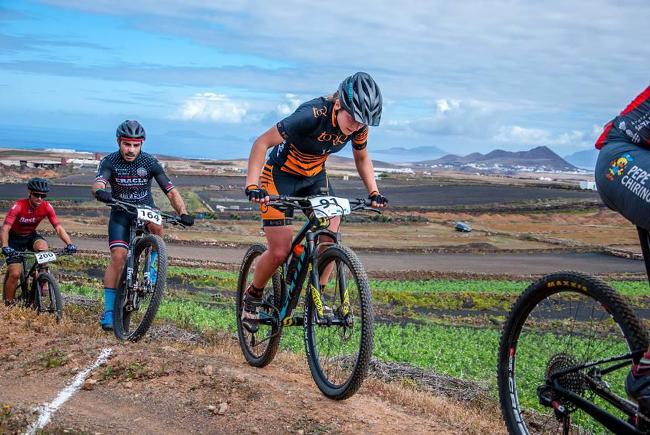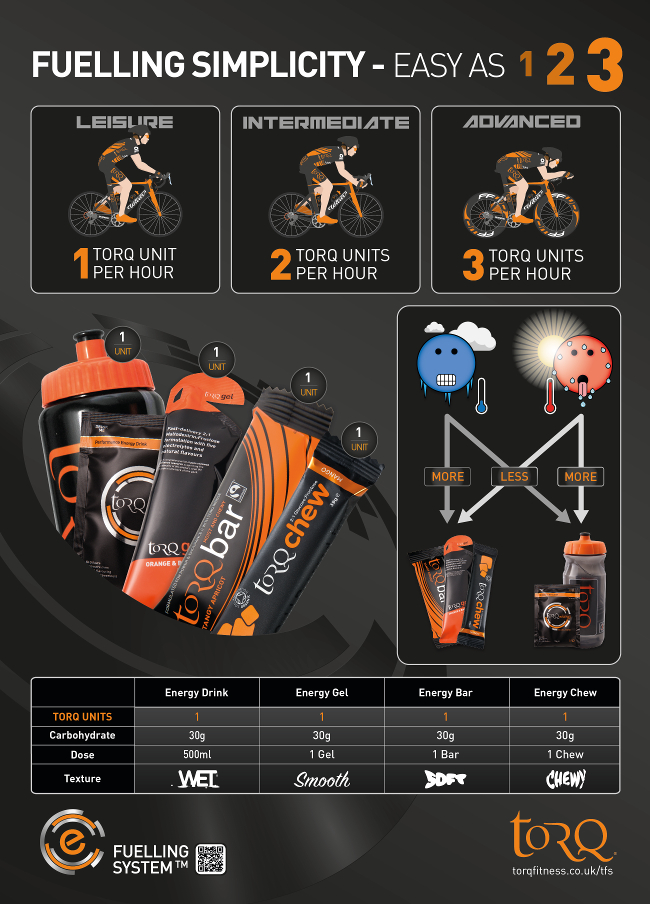We provide you with a short history on carbohydrate fueling and an insight into an exciting future with 2:1 Glucose:Fructose formulations. Could 4 TORQ Units per hour now possibly be on the cards?
For many years, carbohydrate has been the go-to nutrient for enhancing endurance sports performance, with research exploring the optimal amount of carbohydrate consumption pre, during and post exercise. Of course science never stops and the search to find superior fueling methods to give athletes the upper hand against their rivals is a painstakingly meticulous and continual process. Here at TORQ, we make it our job to simplify the minefield that is sports nutrition research and not only provide you with the honest summaries of some of the world’s most accurate and up-to-date conclusions, but also make absolutely sure that we incorporate strong reliable peer-reviewed research into our product development.

Back in the 1930’s researchers found that when carbohydrate was ingested, sports performance was improved, but the exact rational supporting this was unclear. Research developed, and new proposed fueling strategies emerged. These new strategies suggested that when 30 grams of glucose was ingested per hour (g/hr), endurance performance increased and time to exhaustion was extended. Extending time to exhaustion essentially means that a given exercise intensity is able to be maintained for longer. This carbohydrate feeding strategy soon progressed to 60g/hr equating to further benefits to performance.
It was beyond this 60g/hr marker that researchers found themselves upon a stumbling block towards the late 1990’s. That stumbling block was gastric upset and stomach cramps, leading to reduced exercise performance. Research identified that the intestinal transporter responsible for absorbing glucose from the intestine to the bloodstream (SGLT1) was saturated at 60g/hr, meaning that if 80g was ingested, 20g would not get absorbed, sitting in the intestine, leading to gastric upset and ultimately reduced performance (Jentjens et, al. 2004).

In a mission to allow athletes to absorb more carbohydrate per hour, enhancing time spent at a given intensity or increasing time to exhaustion, Jentjens and colleagues (2004) established that when glucose and fructose were ingested together at 90g/hr (60g from glucose & 30g from fructose), carbohydrate oxidation (burn rate) was significantly greater than when glucose only was ingested. This meant that more carbohydrate than ever before from sports nutrition could be utilized to support endurance performance. This generated a glycogen (stored glucose) sparing effect which in turn extended time to exhaustion beyond the benefits seen at 60g/hr.
Another significant finding from this research wasn’t just that more carbohydrate could be utilized through multiple sources, but also, because the 90g/hr absorption was shared across 2 intestinal transporters, the likelihood of developing any gastrointestinal upset during exercise was significantly reduced. Over the next 10 years and still to this day, both research and athlete anecdotes have confirmed that the multi-transportable carbohydrates ingested at the above ratios and values maximizes performance and limits gastrointestinal issues. This is why all of TORQ’s fuelling products are formulated in this way – so that they can be used in combination with each other for maximum performance benefits with minimal gastric distress.
Since this ground-breaking research in 2004, researchers have investigated different carbohydrate ratios and quantities to try to further enhance performance beyond the 2:1 90g/hr benchmark. Research from Jentjens and Jeukendrup (2005) experimented with fuelling athletes with a 1:1 ratio of glucose and fructose at a whopping 144g of carbohydrate per hour!
Although this research did highlight that when 144g/hr of carbohydrate was ingested, a massive 105g of this was utilized, which is much higher than any other finding to date, this came along with the issue of managing gastric comfort with high dose carbohydrate fueling. Participants within this trial experienced the urge to urinate as well as burping and feeling bloated, all of which would have negative implications to performance in a competitive scenario. Furthermore, participants consumed 144g of carbohydrate per hour at an intensity of 50% Wmax (50% of the maximum power derived from a ramp test to exhaustion) for 2.5 hours of cycling. In other words, the power output for the cyclists was very low – significantly lower than competition pace. The average participant wattage data from this study was calculated at 188 watts. For most competitive cyclists this would be within the realms of low intensity endurance training, if not recovery pace, so one needs to ask the question, why would an athlete need to consume 144g of carbohydrate per hour when working at such a low intensity? At these kinds of intensities, a much lighter fueling regimen would provide a more than satisfactory outcome – it’s at the higher intensities where the benefits of high carbohydrate intakes would be borne out. Paradoxically, if these participants experienced gastrointestinal upset at 144g/hr at this low intensity, this doesn’t lend itself well to race scenarios where athletes would be pushing at much higher power outputs, something that notoriously loads more stress onto the digestive system.

It’s also worth noting that when fructose was ingested at 1.2g/min (72g/hr) , it did not elicit any oxidation (energy-giving) benefit over 0.8g/min (48g/hr). The research suggests that carbohydrate absorption from the intestine to the bloodstream is the rate limiting factor for carbohydrate utilisation and not the quantity of carbohydrate consumed. So therefore, 0.4g/min (24g/hr) was potentially stuck within the gastrointestinal tract causing stomach upset.
So, taking the history of carbohydrate fuelling thus far on board, it would suggest that fuelling with 90g/hr (as per the TORQ Fueling System) still holds the golden ticket to absorbing and utilising a high dose of carbohydrate, whilst limiting any potential side effects such as bloating, burping, stitch and the urge to urinate.
Wouldn’t it be significant if there was a way to formulate a product that enabled someone to absorb and use more than 90g/hr without the negatively impacting side effects though? Well, it looks like we might be getting close.

We’re really excited about the future. A brand new research paper published by Virbay and colleagues (2020), highlighted that mountain marathon runners absorbed a very high dose (120g/hr) of carbohydrate from a 2:1 Glucose:Fructose formulation, exactly the same carbohydrate formulation found within TORQ’s Fueling System product range, and experienced little to no gastric upset in a real life race-paced mountain marathon event.
Prior to this event, all 26 elite/professional mountain marathon runners completed a 3 week bout of nutritional training, where the athletes would complete their weekly training commitments. During this time they added progression by increasing the amount of carbohydrate consumed within each training session until they found themselves comfortable at ingesting 120g of carbohydrate per hour (4 TORQ units per hour). The results demonstrated that during the event, the athletes that consumed 120g/hr found the event significantly easier, statistically compared to those fueling on 90g/hr and 60g/hr respectively. Another key finding was that biochemical markers of muscle damage in the 120g/hr group were significantly lower than groups consuming 60 – 90g/hr. This highlights that muscle fatigue is likely to have been reduced, offering stronger potential for exercise performance to be maintained during long duration events, but also holds significance for races where limited periods of recovery are key to the race outcome, such as multi-day stage racing.

Of course this research is very much in its infancy and it will certainly take time for this area to develop and for further studies to assist in defining clearer answers on whether up to 120g/hr may be possible, if combined with a gastrointestinal training regimen. However, we know that many elite level athletes currently specifically choose TORQ because of our commitment to producing performance-optimized cutting-edge products that utilize the 2:1 research, so if this is you, we encourage you to experiment in training with 4 TORQ Units per hour and provide us with your feedback. It’s important to remember that the intestine is a trainable organ, so be progressive and coach your digestive system over a number of sessions to accept this level of carbohydrate intake. Please give this a try and let us know.
We would like to give a special shout-out to EVOQ.bike regarding this article, and putting the TORQ Advanced 4 Units per Hour to the challenge (and dropping the man with the hammer while doing it!).
If you found this article interesting and would like to understand the benefits of fueling in more detail, we strongly recommend that you visit the TORQ Fueling System page and watch the associated educational videos. We can’t emphasize enough how understanding how to fuel purposely and effectively will have a huge impact on your performance.
If you are going on a training camp or participating in a multi-day event, you will find this article very useful.
If you are committed enough to enter an ultra-endurance or 24-hour event, read this article.
If you have any further questions about this article or any other on this website, please don’t hesitate in contacting us by email at info@torqusa.com
Research References
Jentjens, R.L., Venables, M.C. and Jeukendrup, A.E., 2004. Oxidation of exogenous glucose, sucrose, and maltose during prolonged cycling exercise. Journal of Applied Physiology, 96(4), pp.1285-1291.
Jentjens, R.L., Moseley, L., Waring, R.H., Harding, L.K. and Jeukendrup, A.E., 2004. Oxidation of combined ingestion of glucose and fructose during exercise. Journal of Applied Physiology.
Jentjens, R.L. and Jeukendrup, A.E., 2005. High rates of exogenous carbohydrate oxidation from a mixture of glucose and fructose ingested during prolonged cycling exercise. British Journal of Nutrition, 93(4), pp.485-492.
Cermak, N.M. and van Loon, L.J., 2013. The use of carbohydrates during exercise as an ergogenic aid. Sports Medicine, 43(11), pp.1139-1155.
Viribay, A., Arribalzaga, S., Mielgo-Ayuso, J., Castañeda-Babarro, A., Seco-Calvo, J. and Urdampilleta, A., 2020. Effects of 120 g/h of Carbohydrates Intake during a Mountain Marathon on Exercise-Induced Muscle Damage in Elite Runners.Nutrients, 12(5), p.1367.


